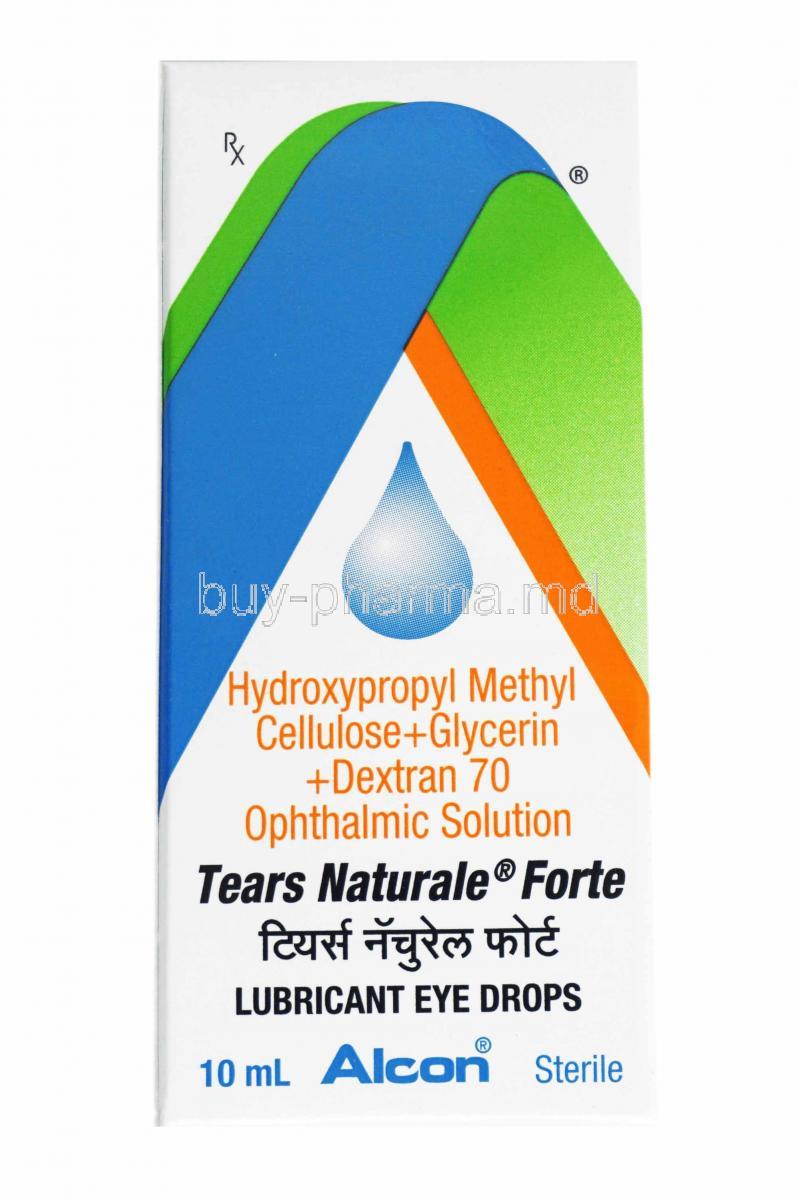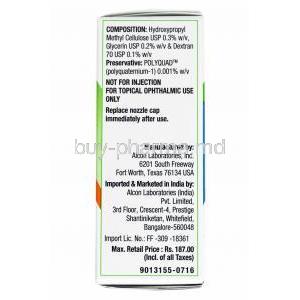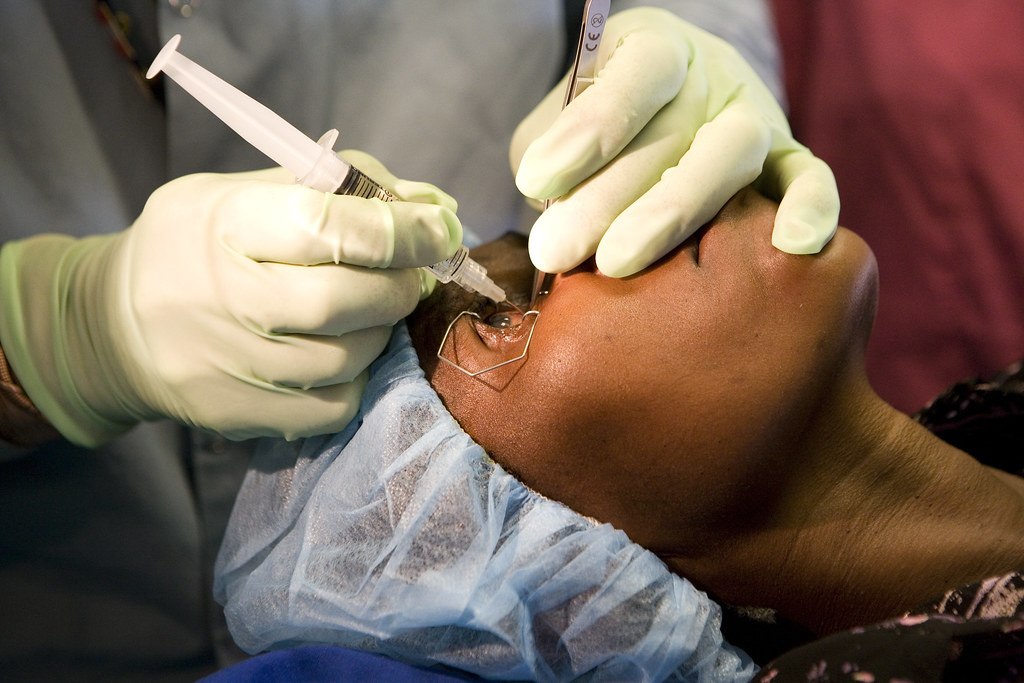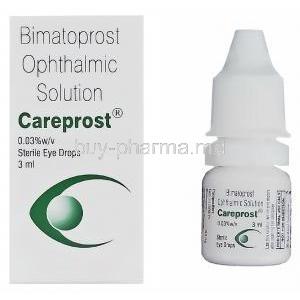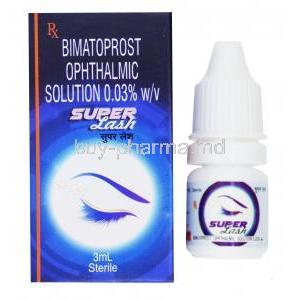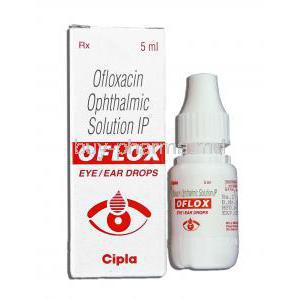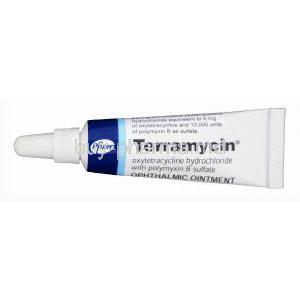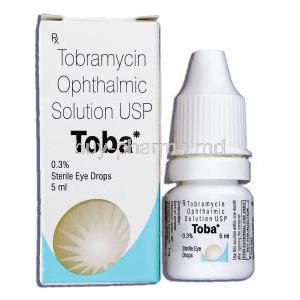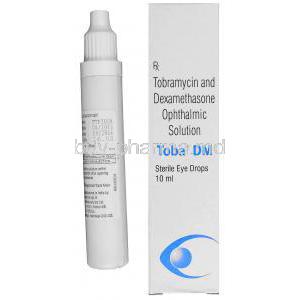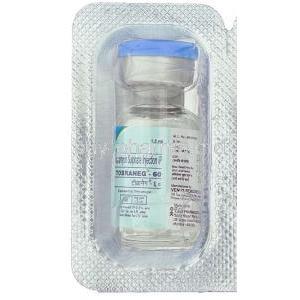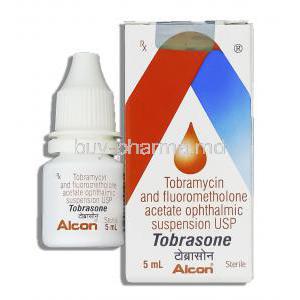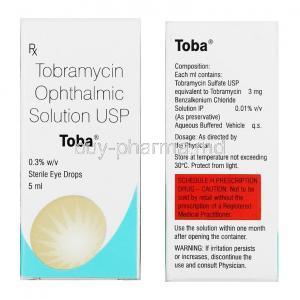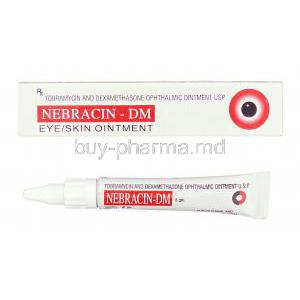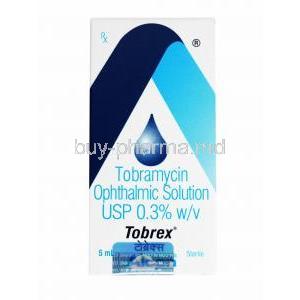Tears Naturale Forte Eye Drop, Hypromellose/ Glycerin/ Dextran
- 1. Introduction to Tears Naturale Forte Eye Drops
- 2. Composition and Active Ingredients
- 3. Mechanism of Action: How Tears Naturale Forte Works
- 4. Tears Naturale Forte eye drops uses
- 4.1 Treatment of Dry Eye Syndrome (Keratoconjunctivitis Sicca)
- 4.2 Relief of Eye Irritation Due to Wind, Sun, or Screen Use
- 4.3 Use in Contact Lens-Induced Dryness (Under Medical Advice)
- 4.4 Protection from Corneal Desiccation Post-Surgery or Injury
- 4.5 Supportive Therapy for Allergic or Inflammatory Eye Conditions
- 5. Off-Label and Adjunctive Uses
- 6. Dosage and Administration Instructions
- 7. Common and Potential Side Effects
- 8. Drug and Product Interactions
- 9. Warnings and Contraindications
- 10. Important Precautions Before and During Use
- 11. Special Population Considerations
- 12. Overdosage and Emergency Measures
- 13. Storage and Shelf-Life Instructions
- 14. Handling Precautions and Patient Counseling
1. Introduction to Tears Naturale Forte Eye Drops
1.1 Overview of Tears Naturale Forte
Tears Naturale Forte Eye Drops are sterile, lubricating ophthalmic solutions formulated to relieve dryness and irritation of the eyes. Designed to mimic the natural composition of human tears, they provide essential hydration and comfort for individuals experiencing symptoms of dry eye due to environmental factors or underlying medical conditions.
1.2 Manufacturer and Regulatory Status
This product is developed and distributed by Alcon, a global leader in eye care. Tears Naturale Forte is approved for over-the-counter use in many countries and adheres to stringent regulatory standards for ophthalmic safety and efficacy.
1.3 Role of Artificial Tears in Ocular Surface Disorders
Artificial tears play a critical role in managing ocular surface disorders by replenishing tear film, protecting the cornea, and alleviating symptoms such as itching, redness, and burning. Tears Naturale Forte is often a first-line option in non-surgical management of dry eye syndromes and tear film insufficiencies.
2. Composition and Active Ingredients
2.1 Hypromellose: Properties and Role as a Lubricant
Hypromellose (hydroxypropyl methylcellulose) is a high-viscosity polymer that acts as a protective lubricant. It enhances tear film thickness and prolongs contact time with the corneal surface, reducing irritation and promoting ocular surface healing.

2.2 Glycerin: Humectant and Demulcent Function
Glycerin is a naturally occurring compound known for its humectant properties. It draws moisture into the eye and coats the mucous membranes to reduce friction and shield against external irritants.
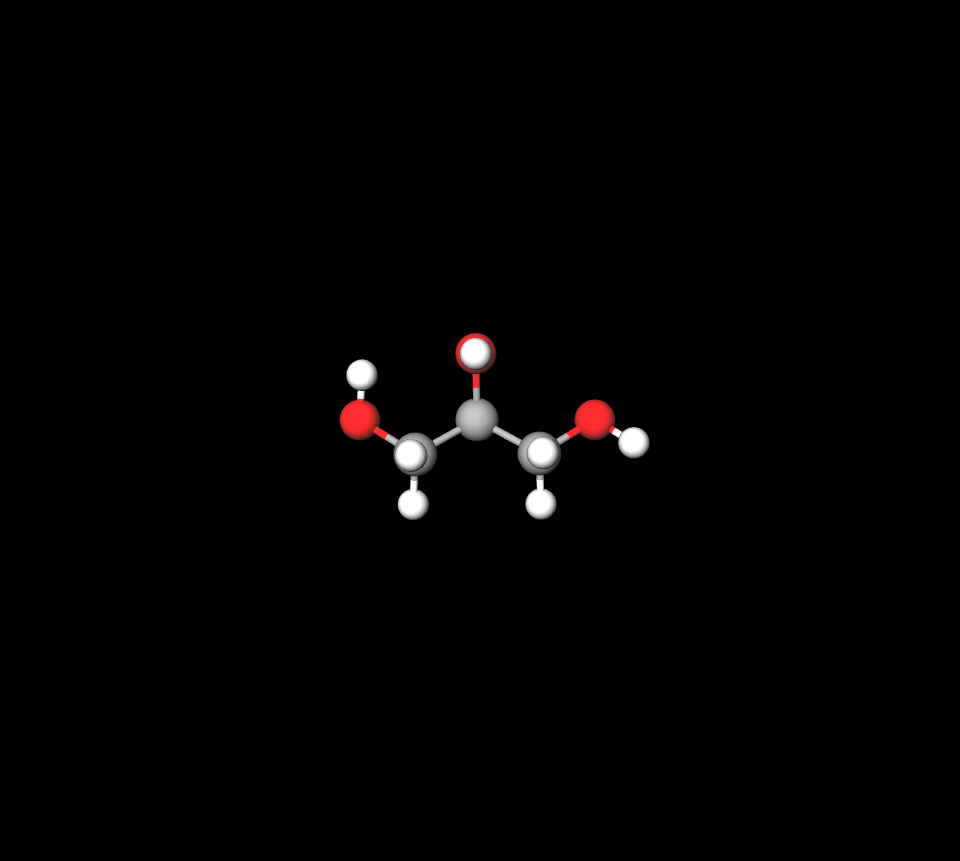
2.3 Dextran 70: Function in Tear Film Stabilization
Dextran 70 is a high molecular weight polymer that stabilizes the tear film and improves its retention. It enhances the synergistic effect of hypromellose and glycerin, leading to more prolonged relief from dryness.
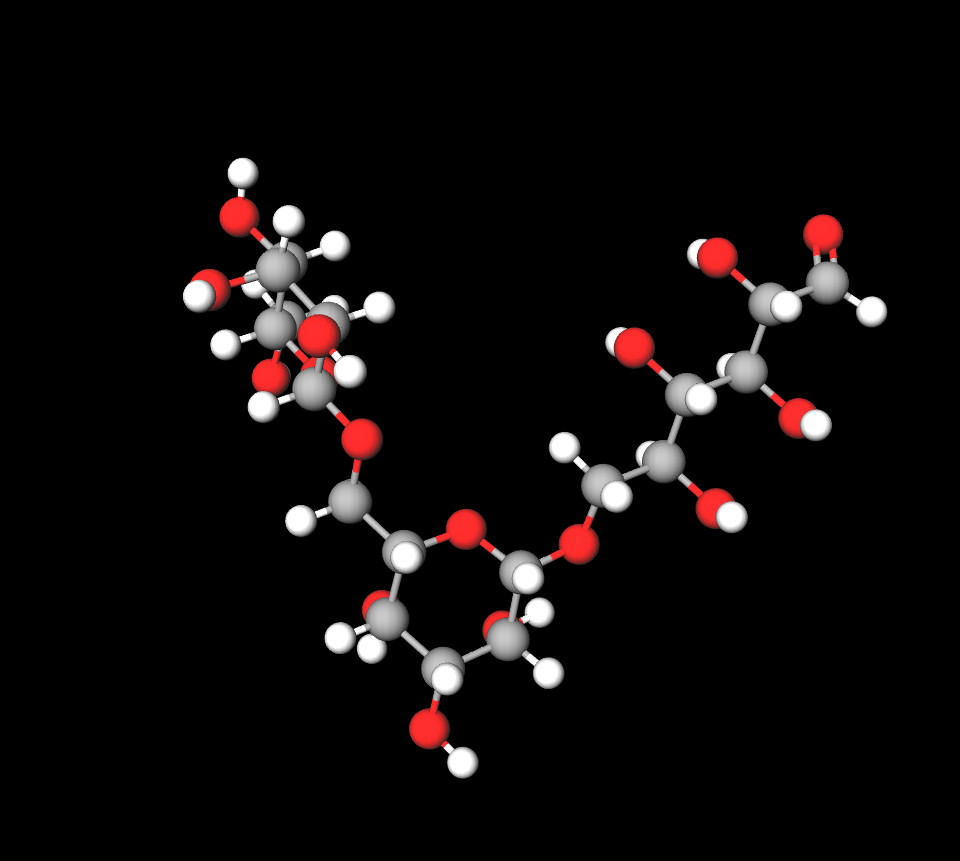
2.4 Inactive Components and Preservative Information
Inactive ingredients may include buffers and tonicity-adjusting agents to maintain pH and osmolarity. Some formulations contain preservatives like benzalkonium chloride (BAK); preservative-free variants may be available for sensitive users.
3. Mechanism of Action: How Tears Naturale Forte Works
3.1 Lubrication of the Ocular Surface
3.2 Enhancement of Tear Film Stability
By augmenting both the aqueous and mucin layers of the tear film, Tears Naturale Forte promotes a more stable and cohesive tear film that resists premature evaporation.
3.3 Reduction of Evaporation and Corneal Friction
The humectant and viscoelastic properties help prevent moisture loss and reduce mechanical friction during blinking, contributing to improved comfort and protection.
3.4 Symptom Relief in Dry Eye Syndromes
Regular use mitigates hallmark symptoms such as foreign body sensation, photophobia, itching, and redness associated with dry eye disorders.
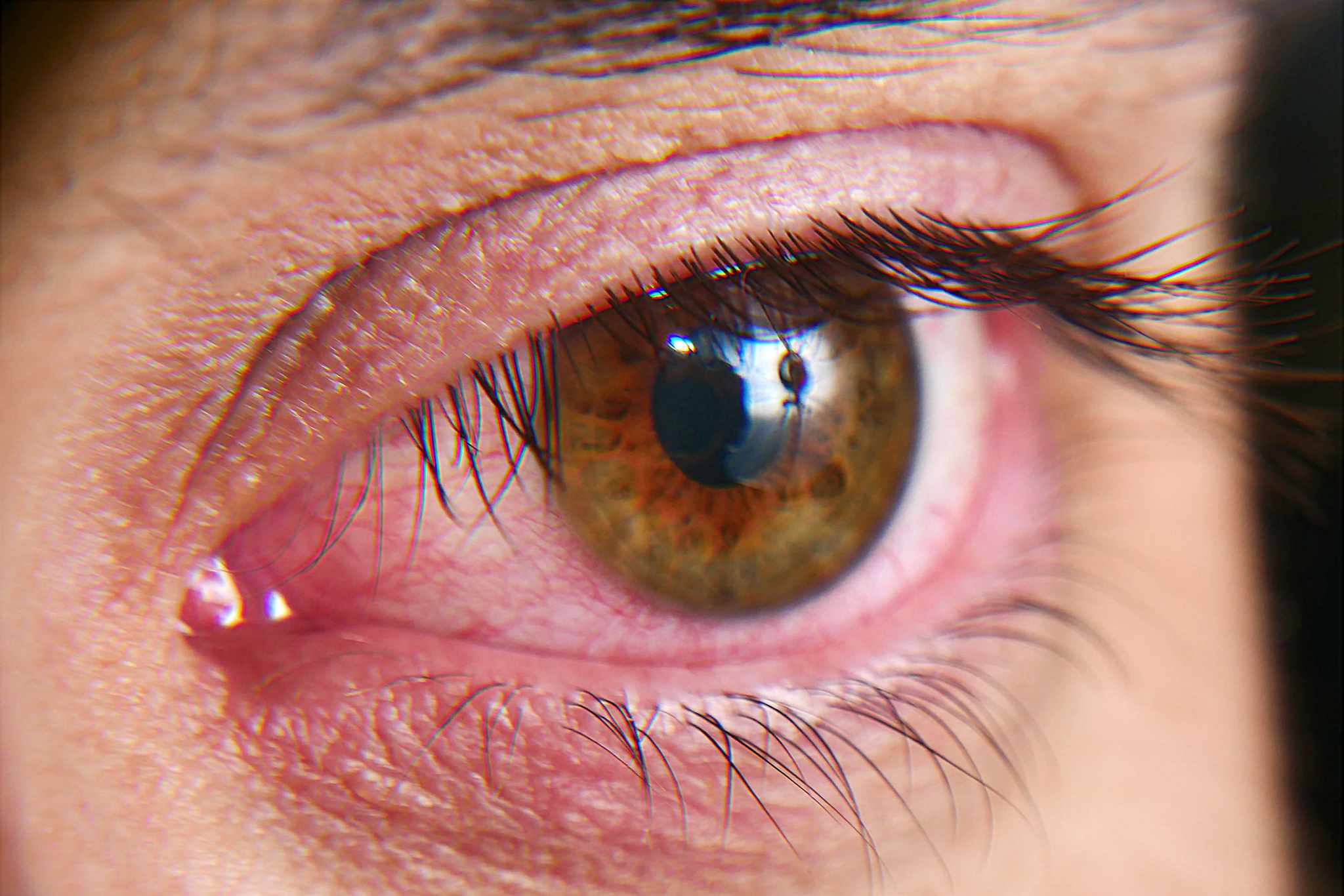
4. Tears Naturale Forte eye drops uses
4.1 Treatment of Dry Eye Syndrome (Keratoconjunctivitis Sicca)
4.2 Relief of Eye Irritation Due to Wind, Sun, or Screen Use
4.3 Use in Contact Lens-Induced Dryness (Under Medical Advice)
May be recommended for contact lens wearers experiencing lens-related dryness, though usage should align with professional guidance.
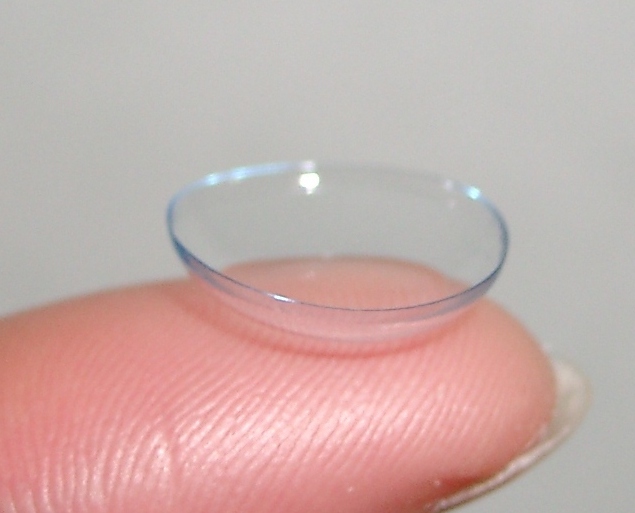
4.4 Protection from Corneal Desiccation Post-Surgery or Injury
Supports healing by maintaining corneal hydration following refractive surgeries, corneal abrasions, or chemical injuries.
4.5 Supportive Therapy for Allergic or Inflammatory Eye Conditions
Adjunct to anti-inflammatory treatment in allergic conjunctivitis, ocular rosacea, or post-infectious inflammation to soothe irritated tissues.

5. Off-Label and Adjunctive Uses
5.1 Symptomatic Relief in Sjögren’s Syndrome
5.2 Support in LASIK and Refractive Surgery Recovery
5.3 Eye Lubrication in ICU or Ventilated Patients
Administered to unconscious or intubated patients at risk of exposure keratitis due to incomplete eyelid closure or reduced blinking.
5.4 Adjunctive Comfort Aid in Computer Vision Syndrome
Provides interim relief from digital eye strain symptoms including eye fatigue, dryness, and blurred vision.
6. Dosage and Administration Instructions
6.1 Recommended Dosage and Frequency
Typically 1 to 2 drops in the affected eye(s) as needed, up to several times daily depending on severity and physician direction.
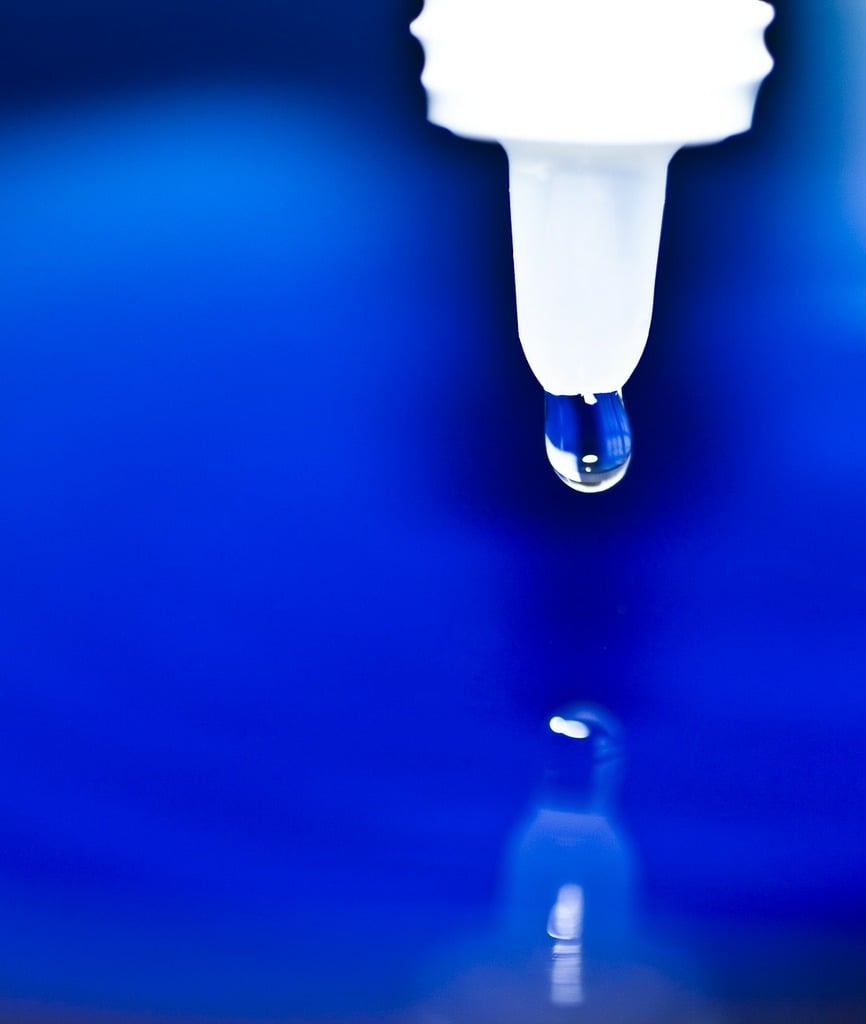
6.2 Step-by-Step Guide for Instillation
- Wash hands thoroughly.
- Tilt head back and gently pull down the lower eyelid.
- Instill the drop into the conjunctival sac without touching the tip to the eye.
- Blink slowly and close eyes for a few moments.
6.3 Missed Dose Protocol
If a dose is missed, apply it as soon as remembered. Skip the missed dose if it's almost time for the next one. Do not double the dose.
6.4 Use with Contact Lenses: Guidelines and Restrictions
Remove contact lenses before use. Wait at least 15 minutes before reinserting. Preservative-free formulations may be preferred for lens wearers.
6.5 Duration of Therapy and Follow-Up
Can be used long-term under supervision. Periodic re-evaluation is recommended to assess ocular health and treatment efficacy.
7. Common and Potential Side Effects
7.1 Frequently Reported Effects: Burning, Stinging, Blurred Vision
Transient stinging, burning, or blurred vision may occur immediately after instillation and usually resolves within minutes.
7.2 Rare but Possible Allergic Reactions
Allergic responses such as redness, swelling, or itching may develop. Discontinue use and consult an eye care professional if symptoms persist.
7.3 Risk of Rebound Irritation with Overuse
Excessive application can lead to reflex tearing and ocular surface irritation due to preservative accumulation or mechanical stress.

7.4 Differences in Sensitivity Based on Preservative Content
Some individuals may experience adverse effects related to preservatives like BAK. Preservative-free options are available for sensitive eyes.
8. Drug and Product Interactions
8.1 Interaction with Other Ophthalmic Medications
If using multiple eye drops, administer Tears Naturale Forte at least 5-10 minutes apart from other medications to avoid dilution or washout.
8.2 Recommended Interval Between Different Eye Drops
Apply in sequence based on viscosity, thinner drops first, thicker gels or ointments last.
8.3 Systemic Medications That May Exacerbate Dryness
Beta-blockers, antihistamines, and diuretics may worsen dry eye symptoms and necessitate more frequent artificial tear use.
8.4 Precaution with Preservative-Containing Products
Concurrent use of multiple preserved drops may increase the risk of corneal toxicity. Monitor closely for signs of epithelial damage.
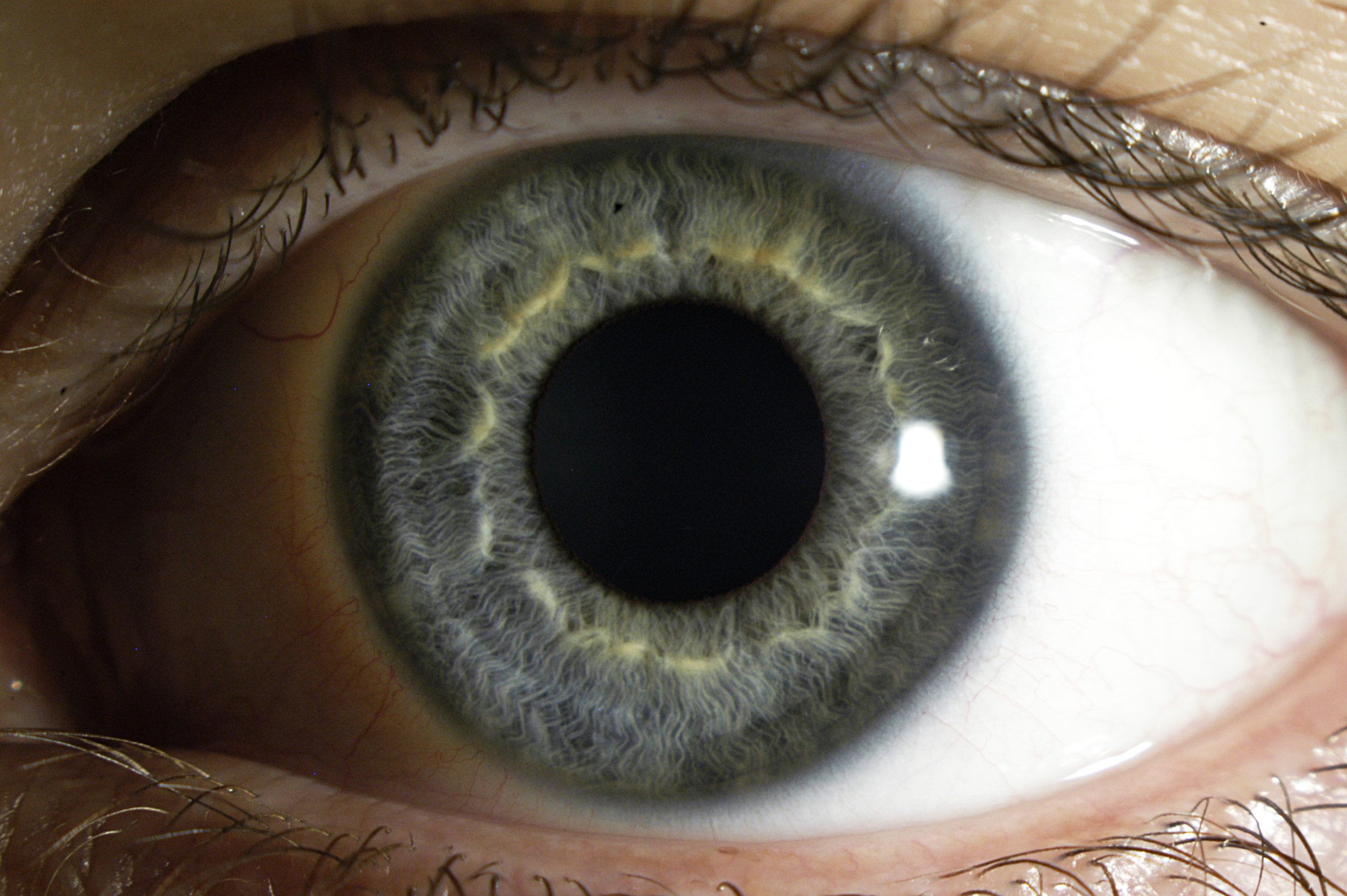
9. Warnings and Contraindications
9.1 Known Hypersensitivity to Any Component
Contraindicated in individuals with known hypersensitivity to hypromellose, glycerin, dextran, or any other component of the formulation.

9.2 Use with Caution in Severe Ocular Infections
While not contraindicated, artificial tears should not be a substitute for antimicrobial therapy in active bacterial, fungal, or viral infections.
9.3 Contraindication in Case of Active Corneal Ulceration
Should not be used as primary treatment for corneal ulcers unless advised by an ophthalmologist due to risk of masking severity.
9.4 Advisory for Prolonged Use Without Medical Review
Long-term unsupervised use may delay diagnosis of serious ocular conditions. Regular follow-up is essential for chronic users.
10. Important Precautions Before and During Use
10.1 Importance of Hygiene and Dropper Care
Maintaining strict ocular hygiene is critical when using eye drops to prevent secondary infections. Before each use, hands should be thoroughly washed with soap and water. The bottle cap should be replaced immediately after each instillation to preserve sterility and product integrity.
10.2 Avoiding Contamination of the Dropper Tip
The dropper tip must never come into contact with the eye, fingers, or any surface. Contaminated tips can introduce pathogens into the eye, leading to conjunctivitis or other complications. It is advisable to keep the bottle upright and avoid squeezing excessively to prevent reflux of ocular fluid into the container.
10.3 Monitoring for Persistent or Worsening Symptoms
If symptoms such as redness, discomfort, excessive tearing, or blurred vision persist for more than 72 hours, discontinue use and consult an ophthalmologist. Delayed resolution may indicate an underlying pathology requiring targeted therapy.
10.4 Avoiding Simultaneous Use of Multiple Artificial Tears
Using multiple brands or formulations of artificial tears concurrently may lead to ingredient overlap or preservative overload. Such practice may exacerbate irritation and compromise the ocular surface. Select a single, well-tolerated product for consistent use unless otherwise instructed by a physician.
11. Special Population Considerations
11.1 Administration in Elderly Patients
11.1.1 Age-Related Dry Eye Prevalence
Dry eye syndrome is highly prevalent among the elderly due to age-related reductions in tear production, lid dysfunction, and chronic systemic disease. Tears Naturale Forte can provide significant relief and support visual quality in this group.
11.1.2 No Specific Dose Adjustment Required
No dose modification is generally required in elderly patients. However, frequency of use may vary based on severity of symptoms and individual response.
11.1.3 Enhanced Benefit in Meibomian Gland Dysfunction
In cases of meibomian gland dysfunction (MGD), commonly seen in older adults, the emollient action of glycerin enhances ocular surface comfort by compensating for lipid deficiency in the tear film.
11.2 Use in Pregnant Women and Nursing Mothers
11.2.1 Available Safety Data
Available clinical data suggest minimal risk associated with the topical ocular use of Tears Naturale Forte during pregnancy or lactation. Nonetheless, large-scale studies are limited.
11.2.2 Systemic Absorption Risk Minimal
Due to low systemic absorption through ocular tissues, the risk to fetal development or nursing infants is considered negligible. However, patients should apply pressure to the nasolacrimal duct for 1-2 minutes post-instillation to further minimize absorption.
11.2.3 Physician Consultation Recommended
As a precaution, pregnant or breastfeeding individuals should consult their healthcare provider prior to initiating use, especially if other medications or comorbidities are present.
11.3 Use in Pediatric Patients
11.3.1 Common Pediatric Indications (e.g., Post-Viral Conjunctivitis)
Children may benefit from Tears Naturale Forte for transient dry eye symptoms following viral conjunctivitis, allergy-related irritation, or prolonged screen exposure. The product provides symptomatic relief without altering natural tear production.
11.3.2 Safety and Tolerability Profile in Children
The ingredients are generally well-tolerated in pediatric populations. However, care must be taken to monitor for rare allergic responses or improper application techniques.
11.3.3 Supervision Required During Use
Children should be supervised by an adult during administration to ensure proper technique and to prevent bottle contamination or overuse.
12. Overdosage and Emergency Measures
12.1 Symptoms of Excessive Administration
While overuse of Tears Naturale Forte is not typically hazardous, it may lead to ocular surface saturation, blurred vision, excessive tearing, or paradoxical dryness due to reflex tearing.
12.2 Risk of Toxicity or Systemic Absorption
Systemic toxicity is exceedingly rare due to the localized action and minimal absorption of ophthalmic drops. However, preservatives in high doses over time may disrupt corneal integrity in sensitive individuals.
12.3 Recommended Action in Accidental Ingestion
If ingested accidentally, the risk of serious toxicity is low. However, supportive care such as hydration and observation is recommended. Seek medical attention in the event of large-volume ingestion or symptoms such as nausea or drowsiness.
12.4 When to Seek Urgent Ophthalmic Care
Emergency evaluation is warranted in the case of:
- Severe eye pain
- Persistent blurred vision
- Swelling of the eyelids or conjunctiva
- Development of purulent discharge or photophobia
These may signal a more serious condition requiring medical intervention.
13. Storage and Shelf-Life Instructions
13.1 Recommended Temperature and Light Conditions
Store the eye drops at temperatures between 15°C and 25°C (59°Fâ77°F). Avoid exposure to direct sunlight, excessive humidity, and freezing conditions, as these may alter the formulation's stability.
13.2 After-Opening Usage Period
Once opened, Tears Naturale Forte should be used within 28 days to ensure sterility. Discard any remaining product after this period, even if unused or visually unchanged.
13.3 Storage Away from Children and Pets
To prevent accidental ingestion or misuse, keep the product out of reach of children and animals. Secure the cap tightly after each use.
13.4 Visual Inspection Before Each Use
Before administering, inspect the solution for discoloration, cloudiness, or particulate matter. Do not use the drops if the solution is no longer clear and colorless.
14. Handling Precautions and Patient Counseling
14.1 Avoiding Sharing of Eye Drops
Eye drops are intended for individual use only. Sharing may transmit infections and compromise the effectiveness and safety of the medication.
14.2 Safe Handling During Travel
When traveling, keep the bottle sealed and store it in a clean, dry container. Avoid exposure to extreme temperatures, especially in luggage stored in overhead bins or trunks.
14.3 Discarding Expired or Contaminated Product
Expired or contaminated eye drops should be discarded safely. Do not flush down the drain; instead, follow local disposal guidelines or return to a pharmacy take-back program.
14.4 Patient Education for Optimal Adherence and Comfort
Effective treatment relies on proper and consistent use. Educate patients on:
- Correct instillation technique
- Frequency of application
- Importance of not skipping doses
- When to consult a physician
Empowered patients are more likely to achieve symptom relief and avoid unnecessary complications.
Tears Naturale Forte Eye Drop, Hypromellose/ Glycerin/ Dextran FAQ
- What is tears naturale forte used for?
- Is it okay to use tear drops everyday?
- Is tears naturale safe to use?
- Does crying wash out eye drops?
- What happens if you use antibiotic eye drops without an infection?
- What should you not do after eye drops?
- What is tears naturale forte?
- How many times a day can you use just tears eye drops?
What is tears naturale forte used for?
This medicine helps soothe irritated eyes often caused by factors such as wind exposure, sunlight exposure, heating or air conditioning usage, prolonged computer use or reading, and certain medications.
Is it okay to use tear drops everyday?
Using eye drops on a regular basis can harm your eye health significantly. Excessive use of eye drops may counteract their intended benefits and disrupt the tear film of your eyes, which can lead to faster tear evaporation.
Is tears naturale safe to use?
Yes
Does crying wash out eye drops?
Yes
What happens if you use antibiotic eye drops without an infection?
The medications may cause the shedding of cells from the corneal layer. This can lead to discomfort and blurry vision, while also increasing the risk of developing an infection.
What should you not do after eye drops?
Blinking could potentially lead to some of the solution spilling out and affecting how well it gets absorbed.
What is tears naturale forte?
The Tears Naturale Fort Ophthalmic Solution combines Hydroxypropylmethylcellulose with Glycerin and Dextran 70 to address eye symptoms by offering lubrication and easing burning sensations and discomfort caused by eye dryness.
How many times a day can you use just tears eye drops?
2-4 times a day

